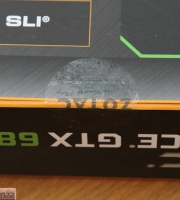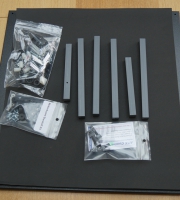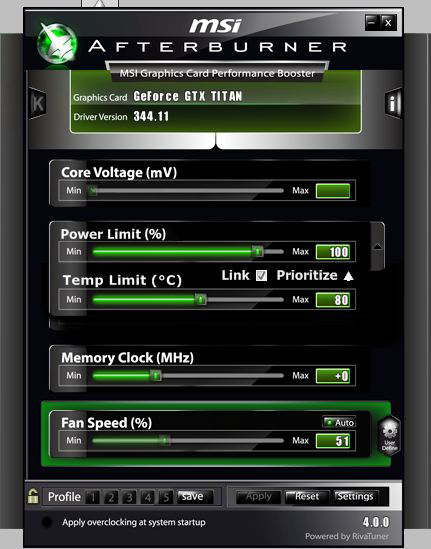


Let us jump to the present and for once, see how simple we can keep things with some refreshing visual aids.
Try to think of all these factory enforced protection schemes as part of a cataclysmic Orwellian nightmare, or capitalism at the core of the 80s or a medieval feudal system or better still, ranks in the military hierarchy, or the 1960s cult TV serial “The Prisoner” starring Patrick Mcgoohan, remember? “I’m not a number, I am a free man” .
No matter how many different readings your monitoring utility contains, there will always be an omnipotent Napoleon sitting atop the pyramid, one Gordon Gecko, a sole Henry VIII or supreme Commander in Chief. A singular “Number one”…probably wearing a chimp’s mask. Worry not, there’s a more succinct analogy impending, I composed that one to communicate some amusing cultural references to distract those who deem the following desperately mundane. Go on, Google Gordon Gekko.

In MSI’s After Burner there are no less than five individual data streams that relate to power and one to temperature.
They are:
GPU OV Max Limit
GPU Voltage Limit
GPU Power Limit
GPU Utilization Limit
GPU Temp Limit
Things become easier to understand if we refer to the “limits” as “limit-ers”. According to the readings Afterburner presents us, these limiters have no granularity – Ah! there’s another ubiquitous, trendy word technologists are loathed to tire of – they rise and fall in straight and not curved lines, implying that, like a digital signal, or old fashioned butchers bulb, they are either active or AWOL. The other figures pertain to resources and speed and can, for now, be disregarded since they are statistical by-products of the limiters’ activities and do not originate from them.
As the temperature and/or energy demands increase one limiter will hand over to the next in command and in instances where the user has set their target temperature or voltage on a borderline, they will relinquish and procure control continuously, and in order of priority.
Between them, all are observing two basic directives.
1. Keep the GPU under 80 degrees, The Titan’s absolute temperature limit.
2. Keep the TDP under 250W, the card’s maximum power limit.
To establish who is doing what, and when, we need to take practical measures.
There are few games that will efficiently extract every watt from a modern GPU, especially in its stock state, and since we need to be able to observe data simultaneously, Geek3ds “Furmark” stress test is a preferable choice.
When run on GTX TITAN Card with all settings at their defaults, the first to leap to the GPUs rescue is the “Power Limiter”. Note the wildly fluctuating green line under “GPU Power Limit” in the image, this occurs the second the test commences.
Looking down, we discover that the “GPU Utilization Limiter” is also vigorously active and the trace is the power limiter’s mirror opposite.
This particular “limiter” would be better classified a as a “regulator” and is the lowest ranked in our graphical chain of command, though of no less significance to speed. Its deployment or dismissal depends on whether any headroom exists for the boost clock supplement to be sanctioned.
So long as power consumption and temperature remain within their staunchly designated margins, it will instruct its host to administer the necessary nitrous, but when either limit is compromised, or the boost bonus is being applied to capacity, its duties will accordingly and abruptly cease. In 2d mode, it remains permanently engaged due to the graphics card’s core and memory being relegated to their “resting” frequencies.
Now let’s examine the other readings, beginning with the top most trace.
We can see the “GPU1 Temperature” is handily hovering around 92-93 degrees, shown extreme right, two degrees under its critical threshold. Meanwhile, the power draw – “GPU1 Power”, fourth line down, is hitting its peak at 102% and being restrained to 97%.
The GPU1 Core Clock, second line down is poised betwixt 666-715 mhz, and “GPU1 Usage”, second from bottom, is topping out at 98-100% for most of the time, with the occasional pronounced sag.
Note how the readings generated by each limiter (“GPU Utilization Limit” and “GPU power Limit”) coincide with the smaller peaks and troughs in the traces for “GPU1 power” and “GPU1 Usage”.
“Usage %” is being influenced by the “Utilization Limiter” and “power %” defined by the “power limiter”, while the traces applicable to each paring show identical periods of activity and in inverse motion.
Each of these limiters is alternatively regulating the card’s operating state according to whose appointed task is being executed. As the core’s boost frequencies cannot be allotted when the card’s TDP is exceeded, both are rapidly conceding and obtaining command on a mutually exclusive basis.
The core frequency is constantly affected by both our authoritative automatons as their aid is urgently sought, though its trace’s fluctuations mostly correspond to those of the power limiter in light of it being the busier of the two. It’s very difficult to identify the exact sequence of cause and consequence from such dense readings.
Suffice to say that because the temperature trace is relatively smooth and its minuscule movements are frequently not aligned with those exhibited by the other three, we can conclude the TDP is presently the determining factor as to which limiter(s) is/are being summoned for service.